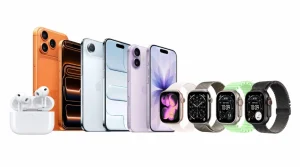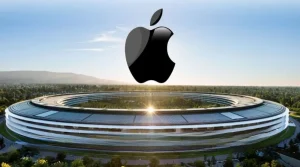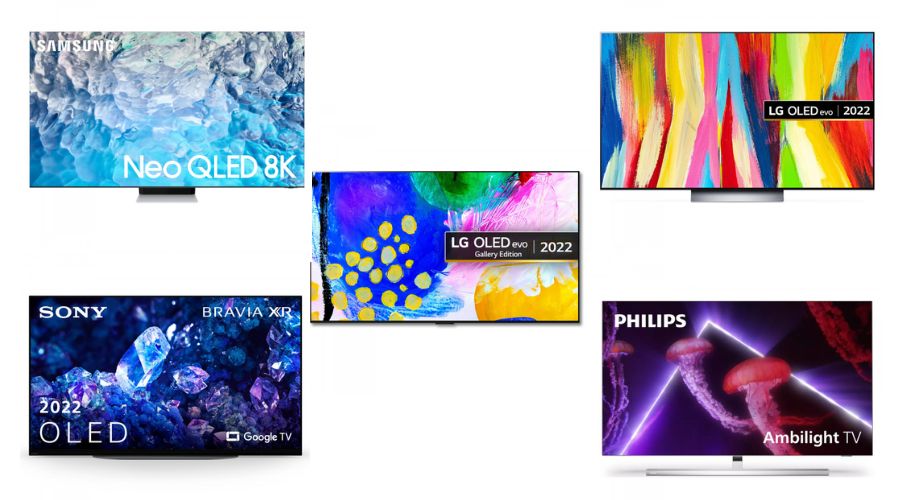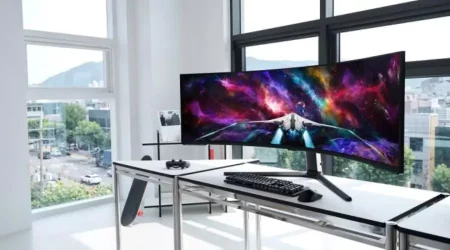Purchasing a new television should be an exciting experience – and it often is – but there is one rather daunting challenge to overcome: there are so many models, types, and sizes from which to select that it can be nearly impossible to determine which is best for you. But don’t worry, we’re here to help. Before you fall victim to crippling indecision, let us take your hand and lead you down the path to TV utopia.
With that being said, Findwyse has the list of the best TVs Hughes has to offer for all your needs:
-
Sony XR-55A95K

While the A95K isn’t as bright as the brightest classical OLED TV, it does achieve good bright highlights with delicate shades that its non-QD-OLED competitors miss.
The bundled Bravia CAM – a camera that magnetically connects to the back of the pair and peeks over the top of the display – isn’t beneficial now and may never be. Still, the A95K is a star in terms of picture quality.
| Pros | Cons |
| Supremely natural, authentic picture | Not outright brighter than an LG G2 |
| Bright highlights that others miss | LG OLEDs are better for gaming |
| Excellent sound by TV standards | Bravia CAM’s usefulness is dubious |
-
Samsung UE43AU7100

You don’t need a seemingly limitless bank account or a massive room to enjoy high-quality video. Look up ‘unassuming’ in the dictionary and you’ll most likely come across an image of the Samsung UE43AU7100. This 43-inch LCD TV does not have a notably glamorous design and does not sell for an unusually high or low price.
| Pros | Cons |
| Balanced, consistent picture quality | Some mild colour compression |
| Strong smart features | Sound doesn’t project well |
| Excellent value for money | Limited gaming features |
-
LG OLED65C2

In 2023, LG’s C-series OLED is still the model to buy. While there are some reasons to choose a competitor, LG’s OLEDs have been the go-to luxury TV of preference for most individuals for years as they are the best Tvs in the business. As a result, each year’s new models are eagerly anticipated, particularly those in the C-series, which have traditionally been the sweet spot in both performance features, and price.
| Pros | Cons |
| Bright and punchy but also authentic | The best OLEDs are brighter |
| Unbeatable gaming specs | Slight bass rattle |
| Engaging sound |
-
Sony XR-48A90K

Sony XR-48A90K is an incredibly small OLED TV and a power to reckon with. It may not have the spotless gaming features of an LG OLED, but it comes close and is one of the best TVs for gaming in its own right, especially if you own a PS5.
| Pros | Cons |
| Extraordinarily sharp, solid, detailed | Not as bright or insightful as some |
| Effortless naturalism | LG C2 has even better gaming specs |
| Good HDMI 2.1 feature set | Very expensive in the UK |
-
LG OLED65G2

In 2021, LG determined that its premium G-series TVs required more than a fancier design to be a convincing step-up alternative to the brand’s all-conquering C series. The OLED65G2 is without a doubt LG’s best TVs to date. The new C2 has an Evo panel, while the G2 has a new heat sink component that enables it to be driven even tougher – or brighter – than its predecessor.
| Pros | Cons |
| LG’s brightest OLED pictures yet | Substantially pricier than the C2 |
| Typically deep blacks, rich colours | Not as bright as premium LCD TVs |
| Improved Gallery design | No stand in the box |
-
Samsung QE65S95B

Samsung has made a bold design statement with the release of its first QD OLED TV. The S95B is super thin over the vast large percentage of its rear, measuring only a few millimetres deep. The connectivity is excellent. All four HDMI ports, in particular, are true 2.1 affairs capable of handling 4K/120Hz, VRR, and ALLM, and there’s an HGiG mode for improved HDR accuracy with games. Dolby Vision is incompatible. Of course, for video games or movie content.
| Pros | Cons |
| Spectacularly vibrant and dynamic | Needs tweaking for best results |
| Peerless viewing angles | Imperfect skin tones |
| Excellent gaming support | Some brightness instability |
-
Samsung QE65QN95B

The QN95B produces the best picture quality we’ve ever witnessed on a 4K LCD TV, and if you’re looking for the kind of backlight brightness and colour amounts that are currently only available on high-end LCD TVs, it’s the best image quality and can be called the one of the best TV in its segment, period. The set is also visually appealing, with a separate OneConnect box for links that can be connected to or disconnected from the TV as preferred.
| Pros | Cons |
| Spectacularly bright and colourful | Weak new smart system |
| Unprecedented contrast for LCD TV | Viewing angle limitation |
| Sleek, monolithic design | No Dolby Vision |
-
Samsung QE75QN900B

The QN900B is Samsung’s flagship range of the best TVs for th brand. This situation justifies in a variety of ways, most particularly with an 8K resolution, a luxury metallic design with speakers built into its periphery, a high-end execution of Samsung’s Mini LED backlighting tech, and highly specialized AI-supported picture processing.
| Pros | Cons |
| Incredibly bright, dynamic pictures | No 8K content worth watching |
| Exceptional detailing and sharpness | No Dolby Vision |
| Gorgeous premium design | Frustrating new smart system |
-
Philips 48OLED806

The 48-inch OLED remains a source of hope for individuals who have more modest needs in a world of ever significantly bigger TVs. You may have relatively small living quarters, desire a decent gaming TV, a display for the bedroom, or the 48-inch alternative is indeed a balance with your less AV-inclined housemate. Whatever the circumstance, the 48-inch OLED is indeed an ideal buy, and the best 48-inch OLED is the Philips 48OLED806.
| Pros | Cons |
| Sharp and punchy but natural | Sound can be bettered |
| Full apps and HDMI 2.1 features | Tricky to adjust for the best picture |
| Dolby Vision and HDR10+ |
-
Sony XR65X95JU

The XR65 is stunning. This step-down model in Sony’s 2021 OLED range isn’t nearly as good as its flagship sibling, but by offering the majority of just what makes it great at a significantly lower price, it has turned out to be one of the best TVs you can buy.
| Pros | Cons |
| Super-sharp and detailed | Not as good for gaming as an LG |
| Superb motion handling | |
| Punchy and vibrant but natural |
That’s all for this list of some of the best TVs for you. Let’s hop into the FAQs for buying the best fit for you.










